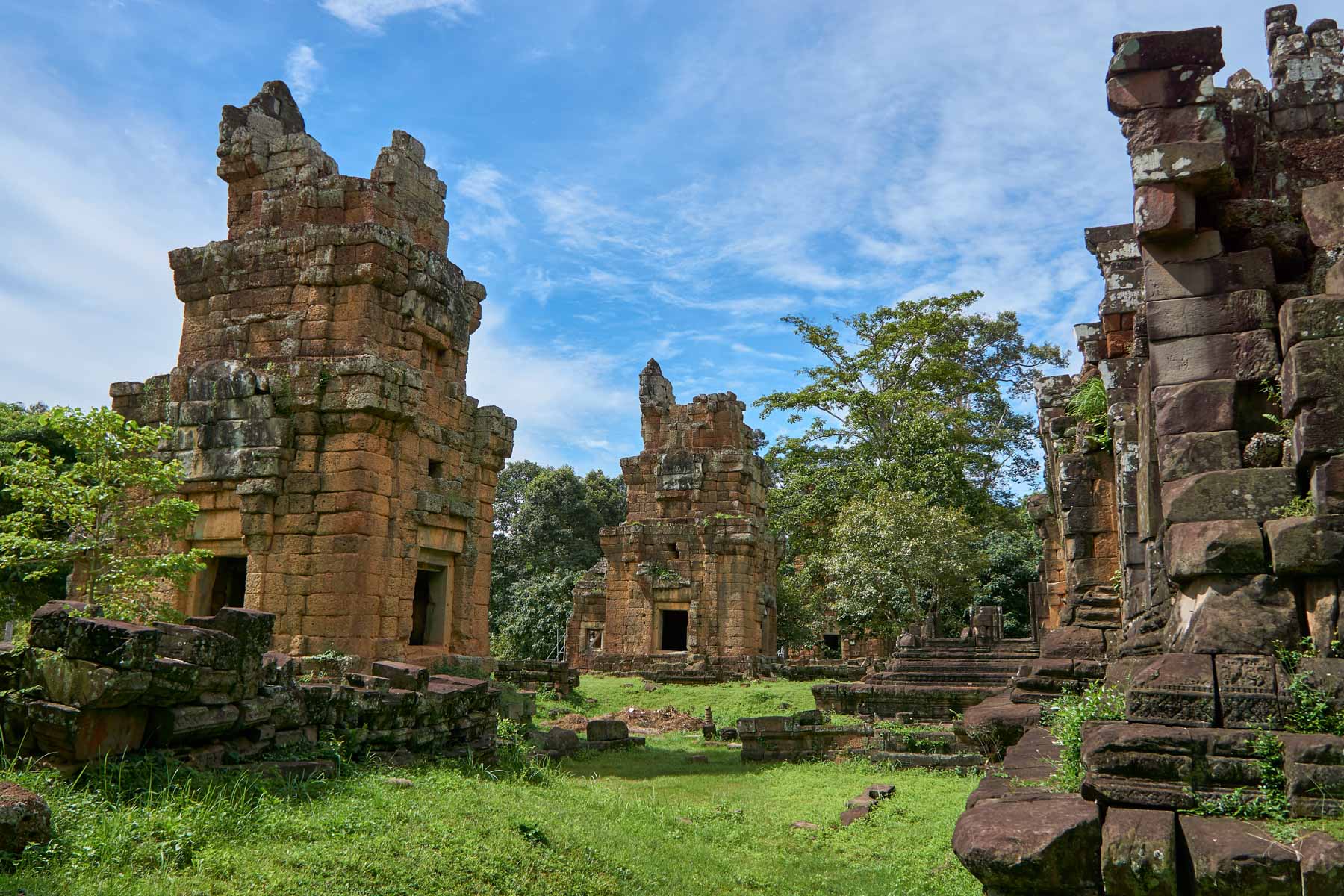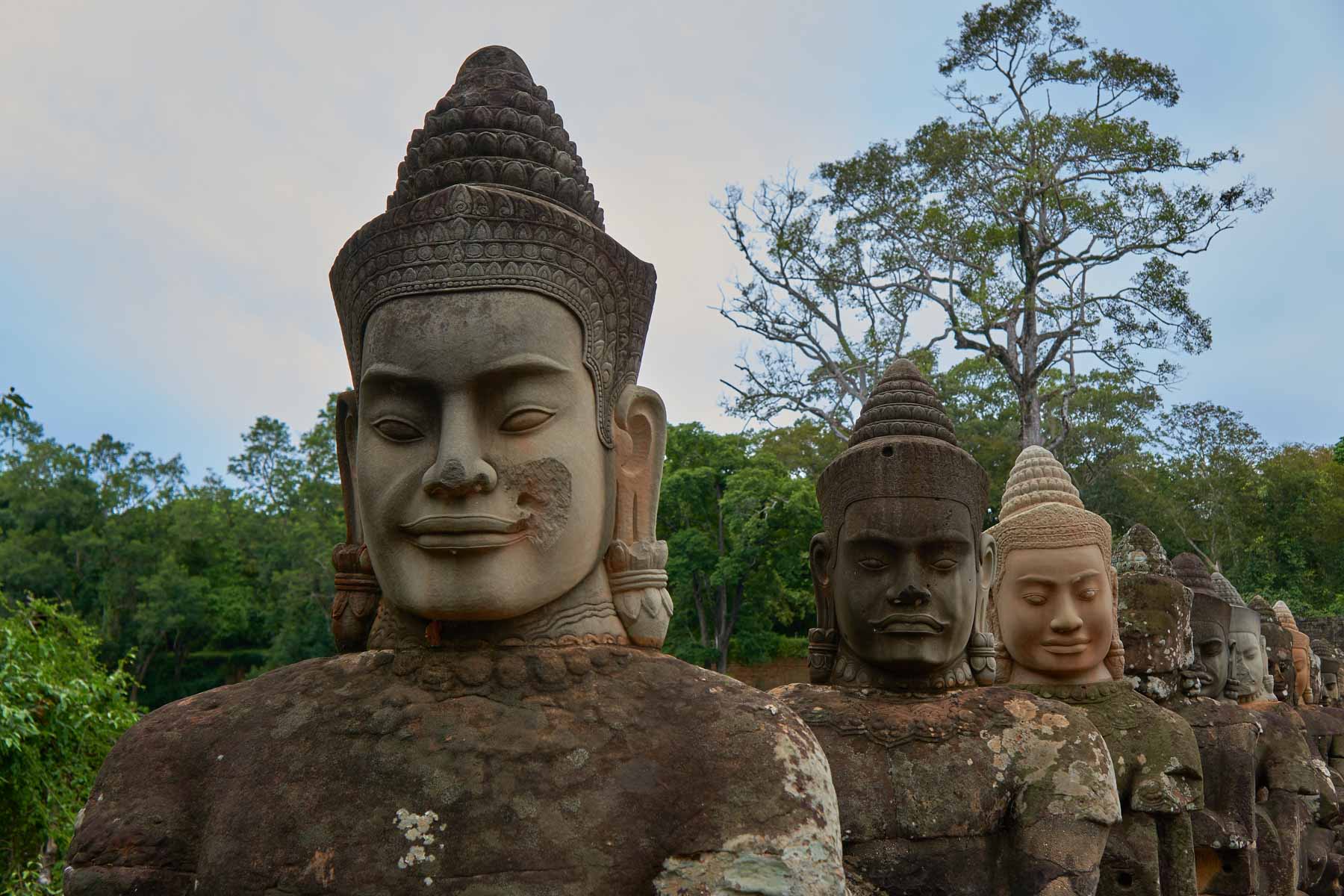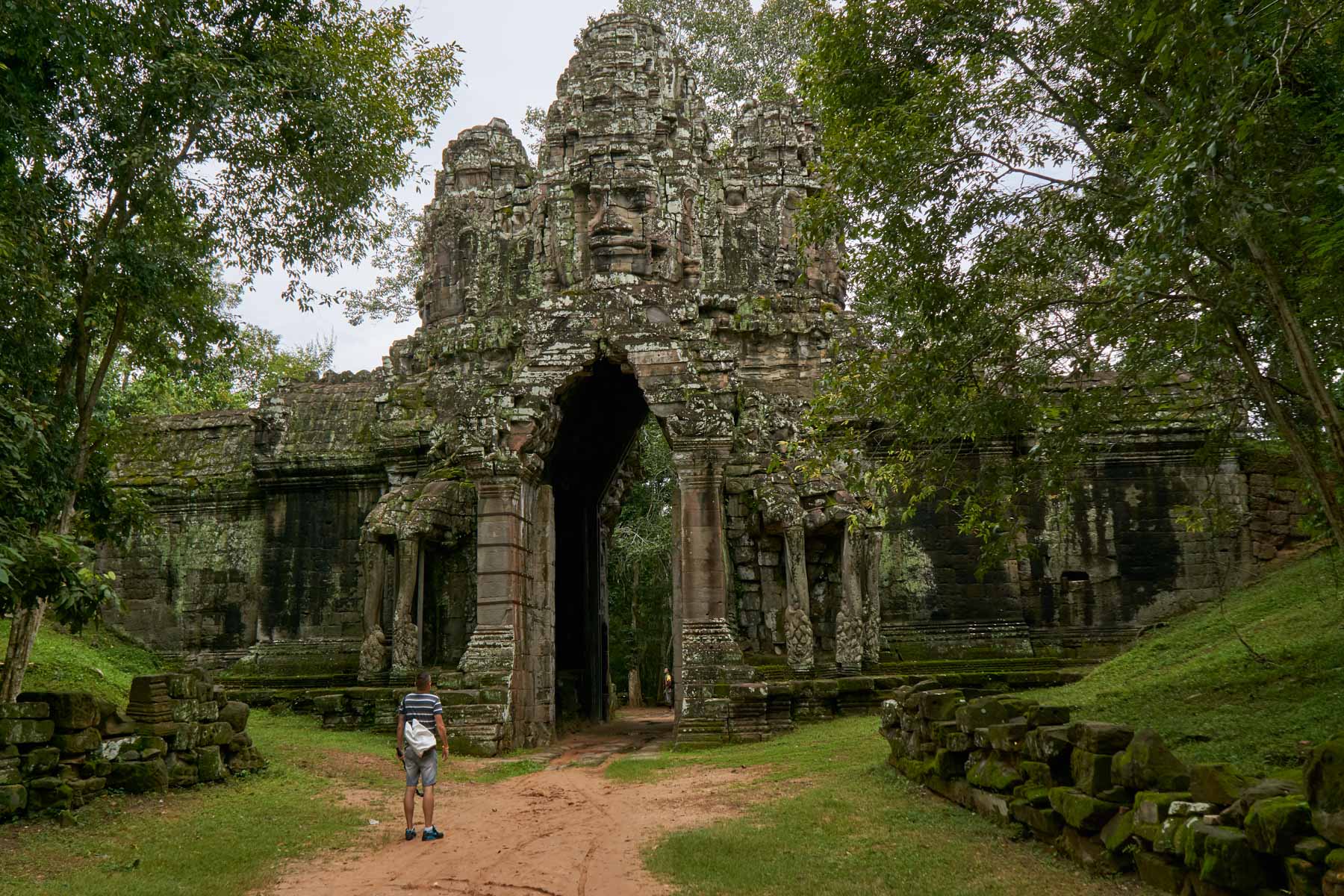Angkor Thom
There are so many Angkor Wat attractions that it is almost impossible to list them all, but one of the highlights has to be majestical Angkor Thom.
History of Angkor Thom
The large walled city complex of Angkor Thom was the last capital of the Angkorian era. Built by Jayavarman VII during his extensive building programme in the late 12th to early 13th century, it remained the capital of the Angkorian civilisation until the 17th Century.
Temples of Angkor Thom
The city is one of the largest of all ancient Khmer cities covering 9 sq-km, and has a 12km moat around its perimeter. Inside the walls lie the temples of Bayon, Bauphon, the Royal Palace compound, the Terrace of the Elephants and the Terrace of the Leper King.

There are a number of smaller buildings. The 12 nearly identical towers of Prasats Suor Prat, the North and South Kleangs, and Preah Pithu Group in the north-eastern corner. The majority of the buildings were built in the 12th and 13th centuries by King Jayavarman VII. The temple-mountain of Bauphon, Phimeanakas temple in the middle of the Royal Palace compound, and the North and South Kleangs all existed before the walls of Angkor Thom were erected.
There are five entrances: north, south, east, west and the final gate named the “Victory Gate”, which lies on the east wall. The most used is the South Gate. The causeways over the wide moat are lined by stone guardian gods on the left and asura demons on the right side (when looking at the gate from the south causeway), the southern entrance is the best restored.
Angkor Thom is a gateway to many temples, and a main attraction of a visit to the Angkor temples.
Where is Angkor Thom?
It is in the heart of the Angkor site near Siem Reap.
Nearby Attractions
It is the next temple complex you come across once you pass Angkor Wat.




